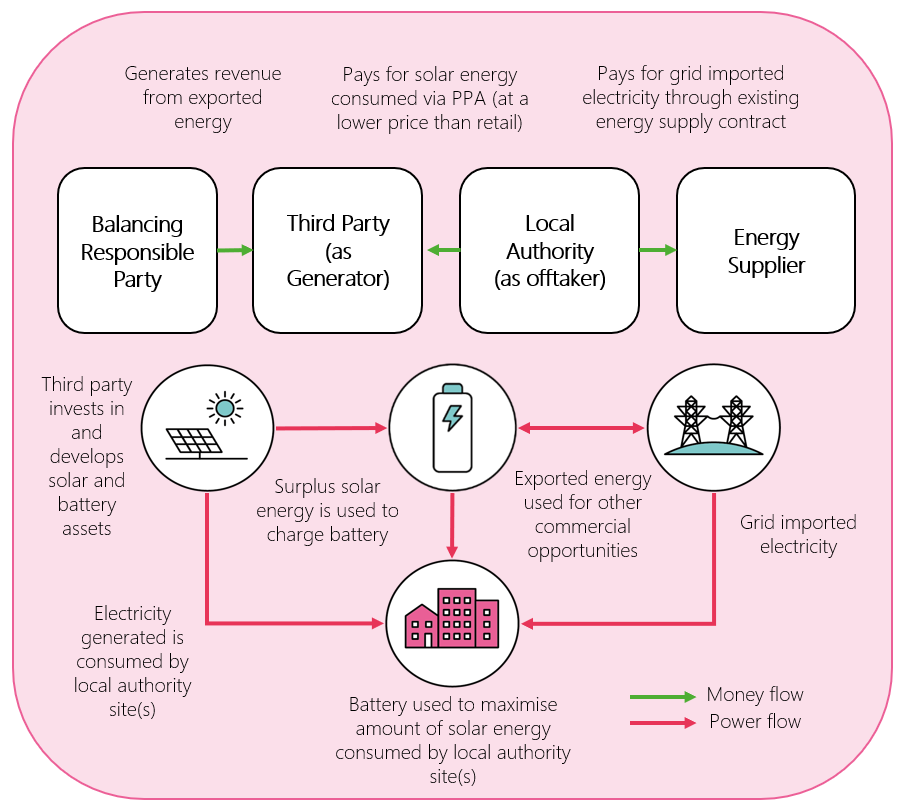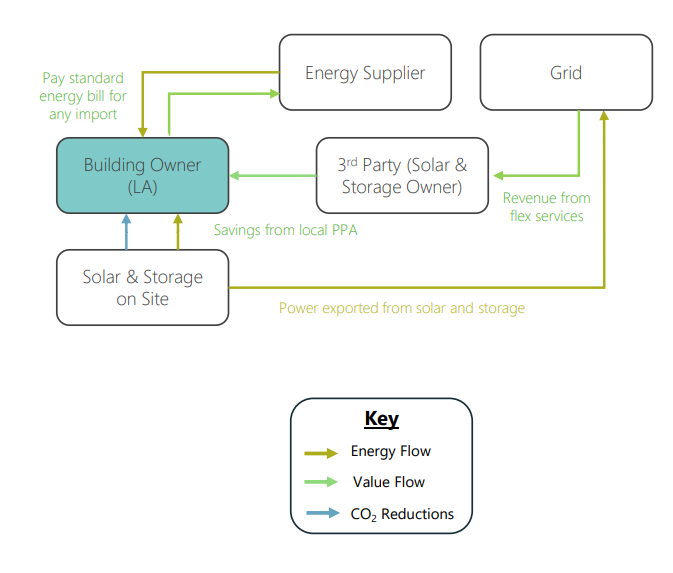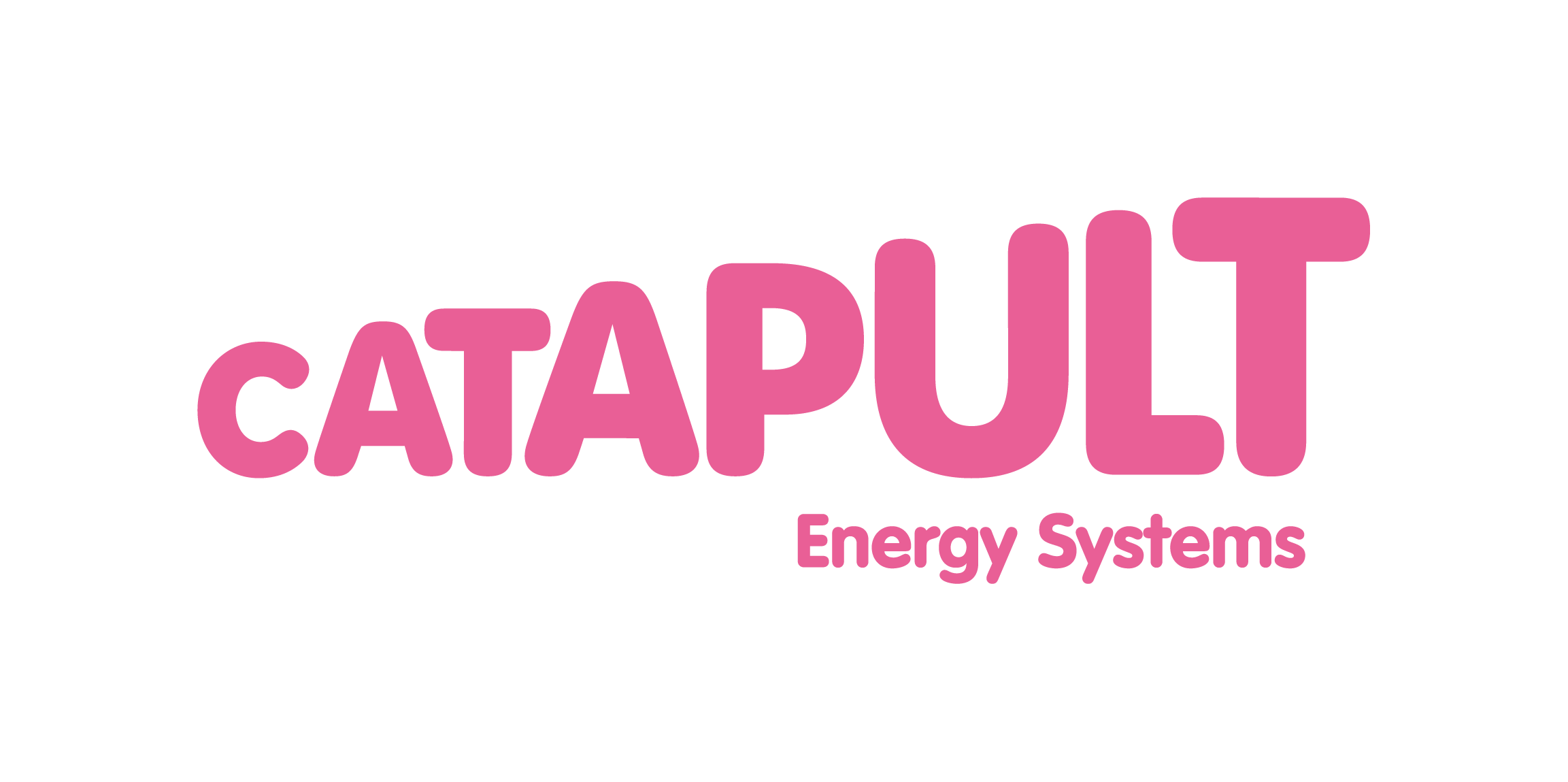This model provides local authorities with the opportunity to benefit from solar and storage technologies without having to front the initial capital investment.
This model provides local authorities with the opportunity to benefit from solar and storage technologies without having to front the initial capital investment. The installation is covered under a ‘licensing agreement’, which means that assets are owned by a third party.
|
This can be enacted as follows:
In this model, solar and storage technologies are deployed at scale. This means that the benefits from numerous sites can be aggregated. Adopting this portfolio approach could mean that less desirable sites, where the business case for storage and site optimisation may not stack up on its own, are able to be included. |
 |

|
|
Key BenefitsFinancial and CO2
Other Benefits
|
Risks and ConsiderationsPotential legal issues of roof licensing and 3rd party asset ownership
|
Contracts and Value Flow
Most Suitable for
- Technology – solar and storage installed on site
- Where local authorities lack resource, this could be the most viable option to mobilise more quickly
- Looking for 3rd party to manage complexity and risk
- Best suited for local authority housing assets or working in partnership with local Housing Associations
- Could look at adapting model to be joint venture where local authority looks to roll out across local area
Contracts required
- Lease or licence for equipment to be installed
- PPA for energy supply (on site generation/ balancing supply)
- Export supply agreement with the DNO (Note this is likely to be best placed with the building owner as opposed to leaseholder or concession holder)
- Contract with meter operator – will need to allow for both import and export metering
- Depending on occupation this might also have implications for onward supply to either commercial or domestic tenants
Contractual Considerations
- On site generation across multiple sites could lead to a breach of a minimum supply requirement on existing contracts
- Costs associated with grid infrastructure upgrades required to support export could be disproportionate to export
- PPA for on-site generation will require long term contract
- Significant on-site generation may impact pricing on balancing supply
- Where the building is tenanted there are significant additional complexities


